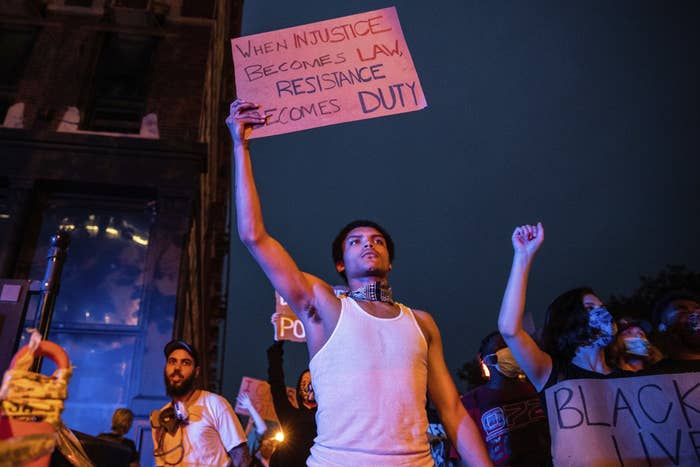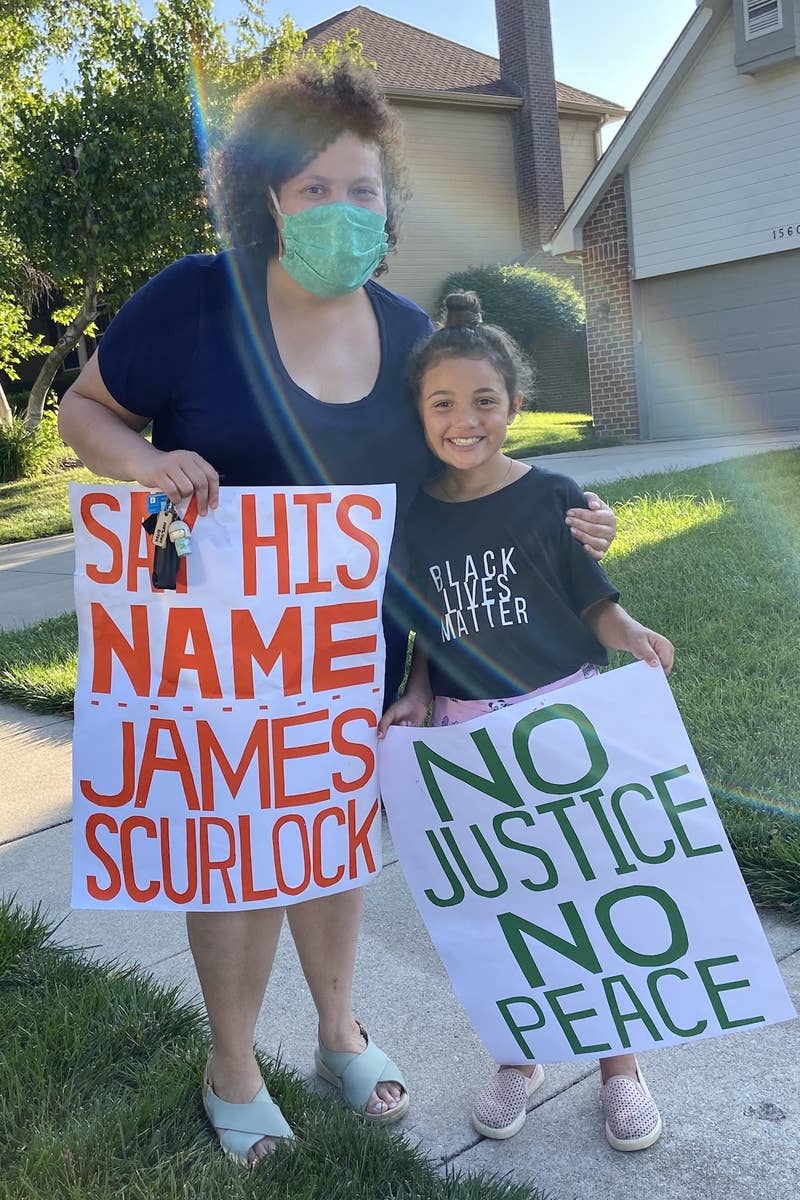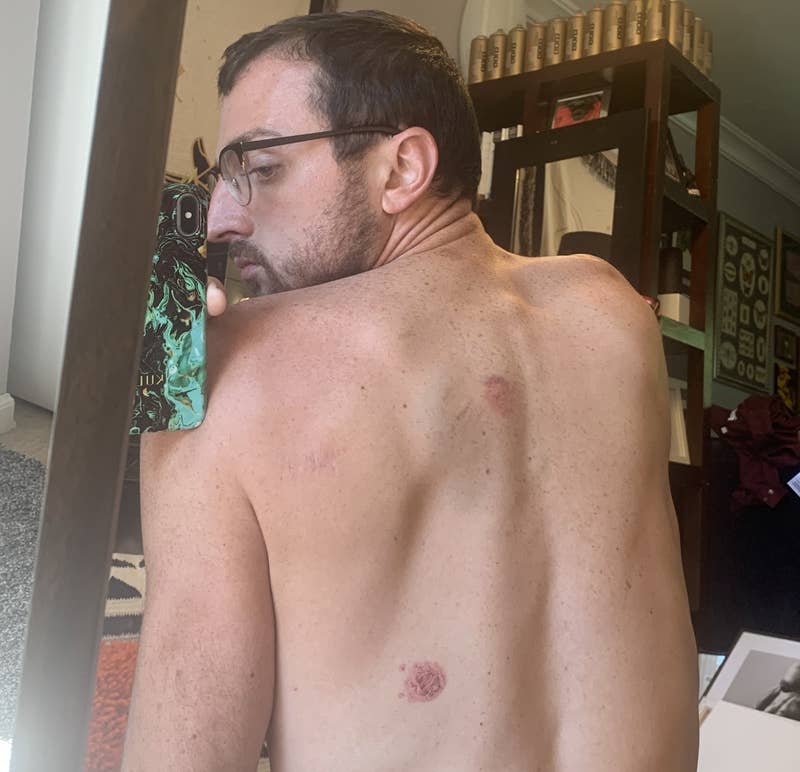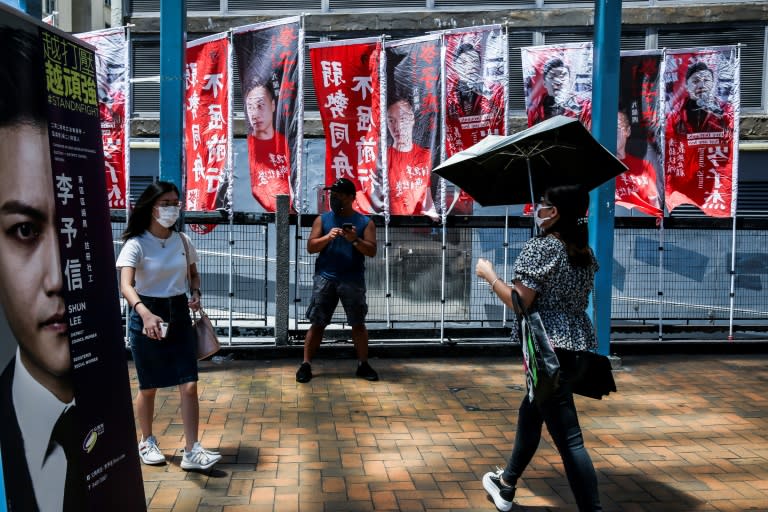Barack Obama gave a powerful eulogy for Rep. John Lewis at his funeral service.
]Tasneem NashrullaBuzzFeed News Reporter
Posted on July 30, 2020
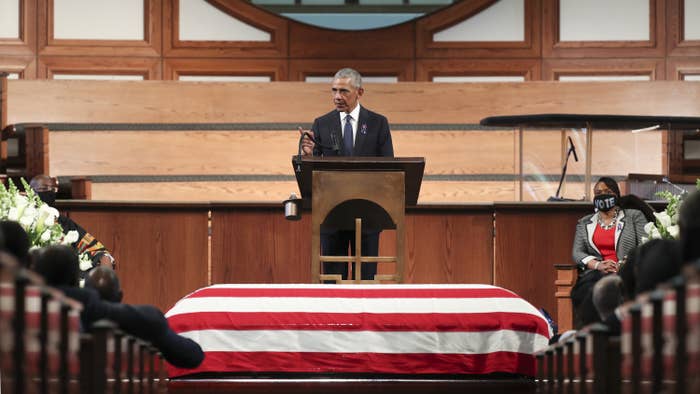
Alyssa Pointer / AP
Barack Obama used his eulogy at the funeral for Rep. John Lewis on Thursday to compare President Donald Trump's sending of federal officers to quash protests in Portland, Oregon, to the tactics of George Wallace, the segregationist Alabama governor who sent state troopers to violently break up peaceful civil rights demonstrations in the 1960s.
Lewis, a civil rights icon who died on July 17 at age 80, was nearly beaten to death in Selma by Alabama troopers authorized by Wallace to stop a historic march for voting rights on March 7, 1965, in what came to be known as Bloody Sunday.
Speaking at the historic Ebenezer Baptist Church in Atlanta, Obama also compared the current use of force by police against Black people to the racist actions of Bull Connor, the commissioner of public safety in Birmingham, Alabama, in the 1960s who was known for using fire hoses and police dog attacks against civil rights activists in Alabama.
"Bull Connor may be gone, but today we witness with our own eyes police officers kneeling on the necks of Black Americans," Obama said, referring to the death of George Floyd in police custody in Minneapolis.
"George Wallace may be gone, but we can witness our federal government sending agents to use tear gas and batons against peaceful demonstrators," he added.

BuzzFeed News@BuzzFeedNews
Barack Obama at John Lewis' funeral: "Even as we sit here, there are those in power doing their darndest to discourage people from voting"06:14 PM - 30 Jul 2020
Reply Retweet Favorite
Wallace, a Democratic politician and the 44th governor of Alabama, was a staunch segregationist who, as Lewis wrote in a 1998 New York Times opinion piece, "fought the civil rights movement with every fiber of his being."
"He was a demagogue whose words and actions created a climate that allowed for violent reprisals against those seeking to end racial discrimination," he wrote.
In March 1965, civil rights leaders, including Lewis, planned to lead a 54-mile march of around 600 activists from Selma to the state capital of Montgomery to protest a Black man's fatal shooting by troopers and to demand full voting rights for Black Americans.
Wallace, citing concerns of traffic flow, ordered state troopers "to use whatever measures are necessary to prevent" the march.
"Such a march cannot and will not be tolerated," Wallace said during a press conference at the time, according to a newspaper clipping from the Los Angeles Times.
Cameras captured state police violently breaking up the demonstration, using tear gas and clubs to beat up hundreds of marchers. Lewis, who said he nearly died that day, suffered a fractured skull, among other injuries.
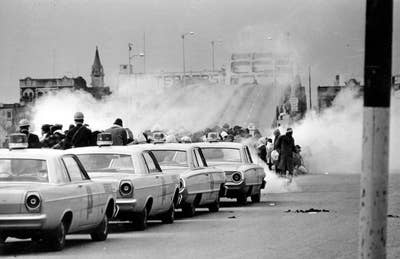
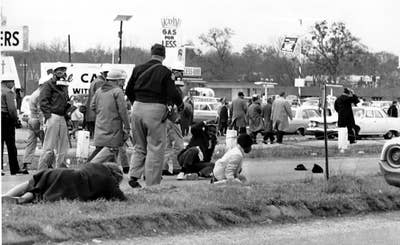
Uncredited / AP, AP Photo/File
In Portland, dozens of widely shared videos have captured federal officers quashing what had been largely peaceful Black Lives Matter protests by using tear gas, "less lethal" munitions, and batons.

Zane Sparling@PDXzane
Here’s the longer version of the protester being struck repeatedly by federal police tonight in Portland06:17 AM - 19 Jul 2020
Reply Retweet Favorite
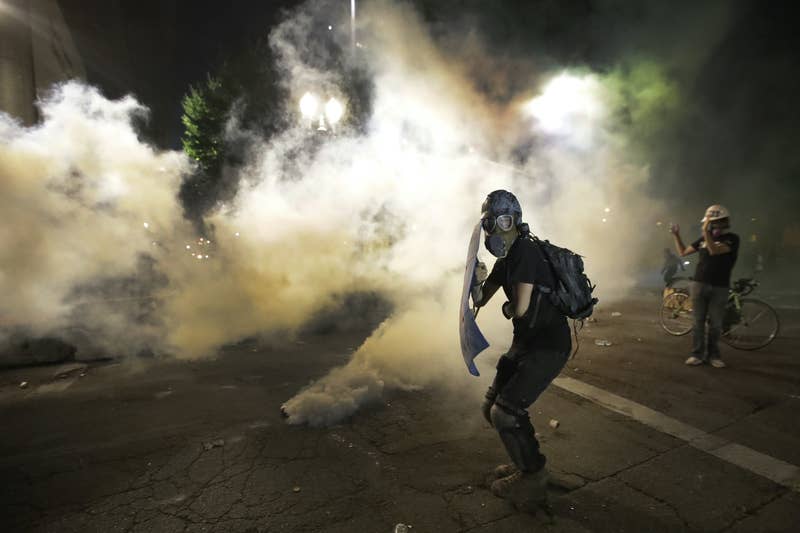
Marcio Jose Sanchez / AP
A demonstrator tries to shield himself from tear gas deployed by federal agents during a Black Lives Matter protest at the Mark O. Hatfield US Courthouse in Portland, Oregon, July 29.
Trump has repeatedly described protesters in Portland as "anarchists and agitators" and emphasized the need for federal troops to "protect" federal property in the city.
But the Trump administration agreed on Thursday to begin withdrawing federal officers from Portland as long as Oregon authorities take steps to protect federal buildings.
In the 1998 Times piece, Lewis wrote that when he met Wallace in 1979, he was a "changed man" who acknowledged his bigotry and "wanted to be forgiven."
Posted on July 30, 2020

Alyssa Pointer / AP
Barack Obama used his eulogy at the funeral for Rep. John Lewis on Thursday to compare President Donald Trump's sending of federal officers to quash protests in Portland, Oregon, to the tactics of George Wallace, the segregationist Alabama governor who sent state troopers to violently break up peaceful civil rights demonstrations in the 1960s.
Lewis, a civil rights icon who died on July 17 at age 80, was nearly beaten to death in Selma by Alabama troopers authorized by Wallace to stop a historic march for voting rights on March 7, 1965, in what came to be known as Bloody Sunday.
Speaking at the historic Ebenezer Baptist Church in Atlanta, Obama also compared the current use of force by police against Black people to the racist actions of Bull Connor, the commissioner of public safety in Birmingham, Alabama, in the 1960s who was known for using fire hoses and police dog attacks against civil rights activists in Alabama.
"Bull Connor may be gone, but today we witness with our own eyes police officers kneeling on the necks of Black Americans," Obama said, referring to the death of George Floyd in police custody in Minneapolis.
"George Wallace may be gone, but we can witness our federal government sending agents to use tear gas and batons against peaceful demonstrators," he added.

BuzzFeed News@BuzzFeedNews
Barack Obama at John Lewis' funeral: "Even as we sit here, there are those in power doing their darndest to discourage people from voting"06:14 PM - 30 Jul 2020
Reply Retweet Favorite
Wallace, a Democratic politician and the 44th governor of Alabama, was a staunch segregationist who, as Lewis wrote in a 1998 New York Times opinion piece, "fought the civil rights movement with every fiber of his being."
"He was a demagogue whose words and actions created a climate that allowed for violent reprisals against those seeking to end racial discrimination," he wrote.
In March 1965, civil rights leaders, including Lewis, planned to lead a 54-mile march of around 600 activists from Selma to the state capital of Montgomery to protest a Black man's fatal shooting by troopers and to demand full voting rights for Black Americans.
Wallace, citing concerns of traffic flow, ordered state troopers "to use whatever measures are necessary to prevent" the march.
"Such a march cannot and will not be tolerated," Wallace said during a press conference at the time, according to a newspaper clipping from the Los Angeles Times.
Cameras captured state police violently breaking up the demonstration, using tear gas and clubs to beat up hundreds of marchers. Lewis, who said he nearly died that day, suffered a fractured skull, among other injuries.


Uncredited / AP, AP Photo/File
In Portland, dozens of widely shared videos have captured federal officers quashing what had been largely peaceful Black Lives Matter protests by using tear gas, "less lethal" munitions, and batons.

Zane Sparling@PDXzane
Here’s the longer version of the protester being struck repeatedly by federal police tonight in Portland06:17 AM - 19 Jul 2020
Reply Retweet Favorite

Marcio Jose Sanchez / AP
A demonstrator tries to shield himself from tear gas deployed by federal agents during a Black Lives Matter protest at the Mark O. Hatfield US Courthouse in Portland, Oregon, July 29.
Trump has repeatedly described protesters in Portland as "anarchists and agitators" and emphasized the need for federal troops to "protect" federal property in the city.
But the Trump administration agreed on Thursday to begin withdrawing federal officers from Portland as long as Oregon authorities take steps to protect federal buildings.
In the 1998 Times piece, Lewis wrote that when he met Wallace in 1979, he was a "changed man" who acknowledged his bigotry and "wanted to be forgiven."
Lewis wrote a final opinion piece for the New York Times prior to his death, which was published Thursday to coincide with his funeral. In it, the late Democratic lawmaker compared Black Lives Matter to the civil rights movement of his era.
"When historians pick up their pens to write the story of the 21st century," he wrote, "let them say that it was your generation who laid down the heavy burdens of hate at last and that peace finally triumphed over violence, aggression, and war."
MORE ON THIS
Moving Photos Show John Lewis Being Carried Over The Edmund Pettus Bridge For The Last Time
"When historians pick up their pens to write the story of the 21st century," he wrote, "let them say that it was your generation who laid down the heavy burdens of hate at last and that peace finally triumphed over violence, aggression, and war."
Moving Photos Show John Lewis Being Carried Over The Edmund Pettus Bridge For The Last Time
Tasneem Nashrulla · July 26, 2020
David Mack · July 29, 2020
Kate Bubacz · July 23, 2020

Tasneem Nashrulla is a reporter for BuzzFeed News and is based in New York.
